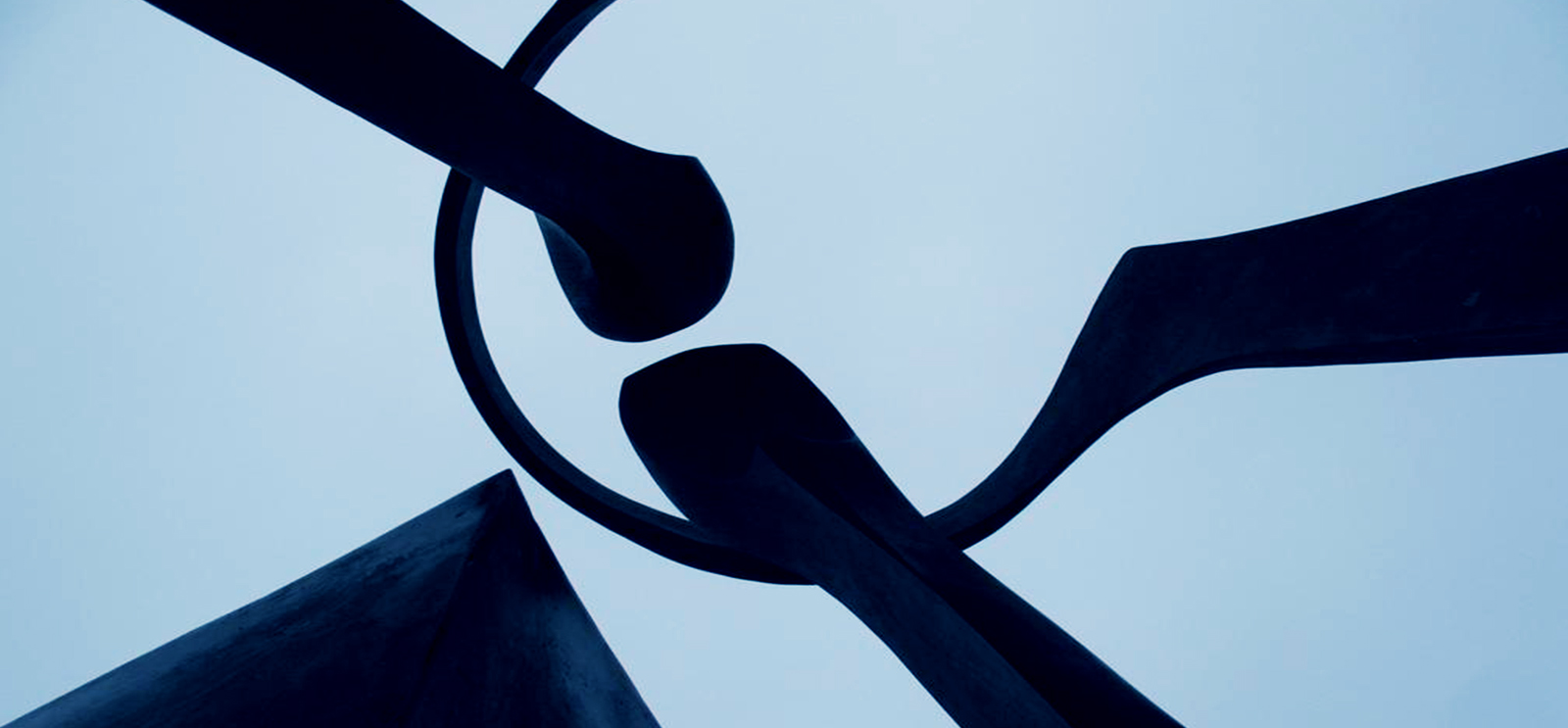
Dialogo. (University of Chicago Magazine archives)
The real story behind Dialogo, the sculpture and the newsletter.
When Virginio Ferrari was commissioned to create a sculpture to go outside the new Albert Pick Hall for International Studies, he had no idea that decades of controversy would ensue. Ferrari, who served as artist in residence and assistant professor of art at the University from 1966 to 1976, wanted his sculpture to express the idea of “international understanding,” he says. The separate elements of the sculpture were intended to “have a dialogue with each other, the negative and the positive, the male and female.”
Dialogo was cast in bronze in Ferrari’s Italian hometown, Verona, Italy, after being created in Chicago. When he unveiled the model for it at Midway Studios, Ferrari recalls, “everyone clapped their hands and said, ‘We love it.’” The sculpture stands 15 feet high and weighs more than two tons. The title was “naturally, in Italian, Dialogo,” he says (pronouncing it with the emphasis on the second syllable, Dee-AH-lo-go). The abstract sculpture was intended to symbolize “serenity out of strife,” Ferrari told the University of Chicago Magazine in 1971. His own description of Dialogo: “Three of the four forms emerge from strong, geometric elements, representing the diversity, pain, and depression in the life on any continent. They rise up slowly and become soft and delicate. Two of the forms almost touch in the center in a caressing manner. The third, almost a circle, hovers over the two, to suggest protection and security for the life of tomorrow. The fourth form represents a big wave, symbolic of the water that surrounds and unites all the continents.”
In the spring of 1971, Ferrari and his students began installing Dialogo. They noticed that it cast a shadow on the east wall of Pick Hall, “but we didn’t pay much attention,” he said in a recent interview. Then came a Chicago Maroon article claiming the sculpture had been deliberately designed to cast the shadow of a hammer and sickle on May 1, International Workers’ Day. “It was not my intention to have something like that.” He says that for the past 40 years, he’s been asked about it whenever the calendar rolls around to May 1. “It bothered me at the time, because in those days, the United States and Russia didn’t get along together,” says Ferrari. “I wanted to have an international dialogue.”
The Berlin Wall came down, the Cold War ended, and still the legend persists. (According to one fabricated version, the Economics Department even refused to move in to the building because of the shadow.) John Mark Hansen remembers hearing it soon after he joined the University faculty. “I’ve had an office in Pick since I came here in 1986,” says Hansen, the Charles L. Hutchinson Distinguished Service Professor in Political Science and the College. “I’ve been here on many May firsts. As an empiricist, I will say that it is not within my empirical observation.” When Hansen was appointed dean of the Division of the Social Sciences in 2002, he wanted to forge a closer relationship with alumni. As part of that effort, the alumni newsletter, “formerly published under the prosaic name of Social Sciences News,” as Hansen puts it, was redesigned and renamed Dialogo, intended to “signal the kinds of conversations that happen among the faculty and among students, across disciplinary boundaries, across different approaches.” At the same time, it describes a certain kind of conversation. “There are two parties to a dialogue. And there’s the implication that you’re entering into the conversation as an equal, another hallmark of this place,” Hansen says. “Dialogo reflects the key values of the University, as well as the Division.” More than 40 years later, Ferrari has similar ideas about his sculpture. “The idea is not a monument, but a dialogue,” he says. “You can be part of that. I’ve seen children skate over it, young people sit on it. Dialogo has become part of the building itself. I’m still very proud of it. It’s one of the most important pieces I’ve ever done.”
